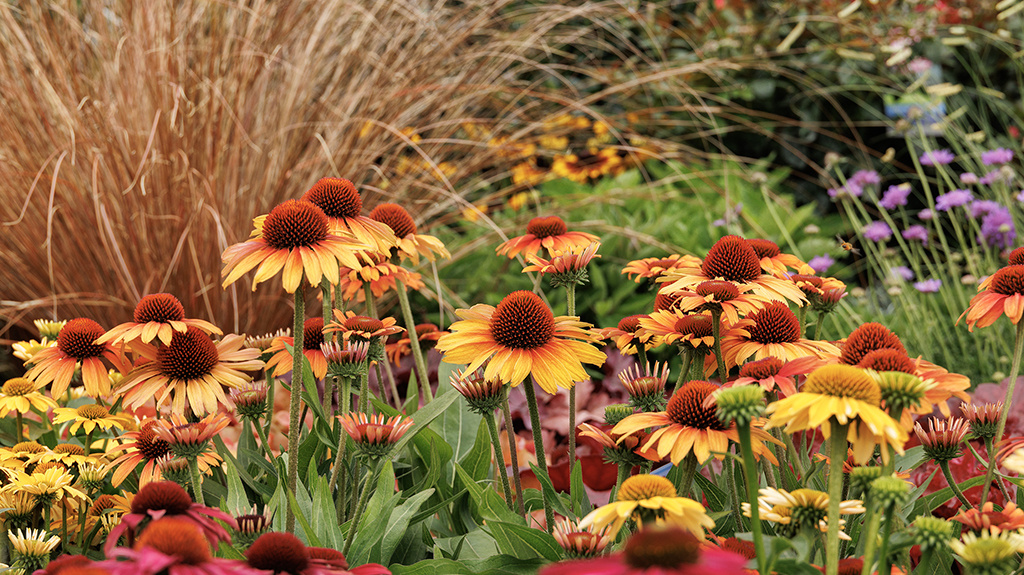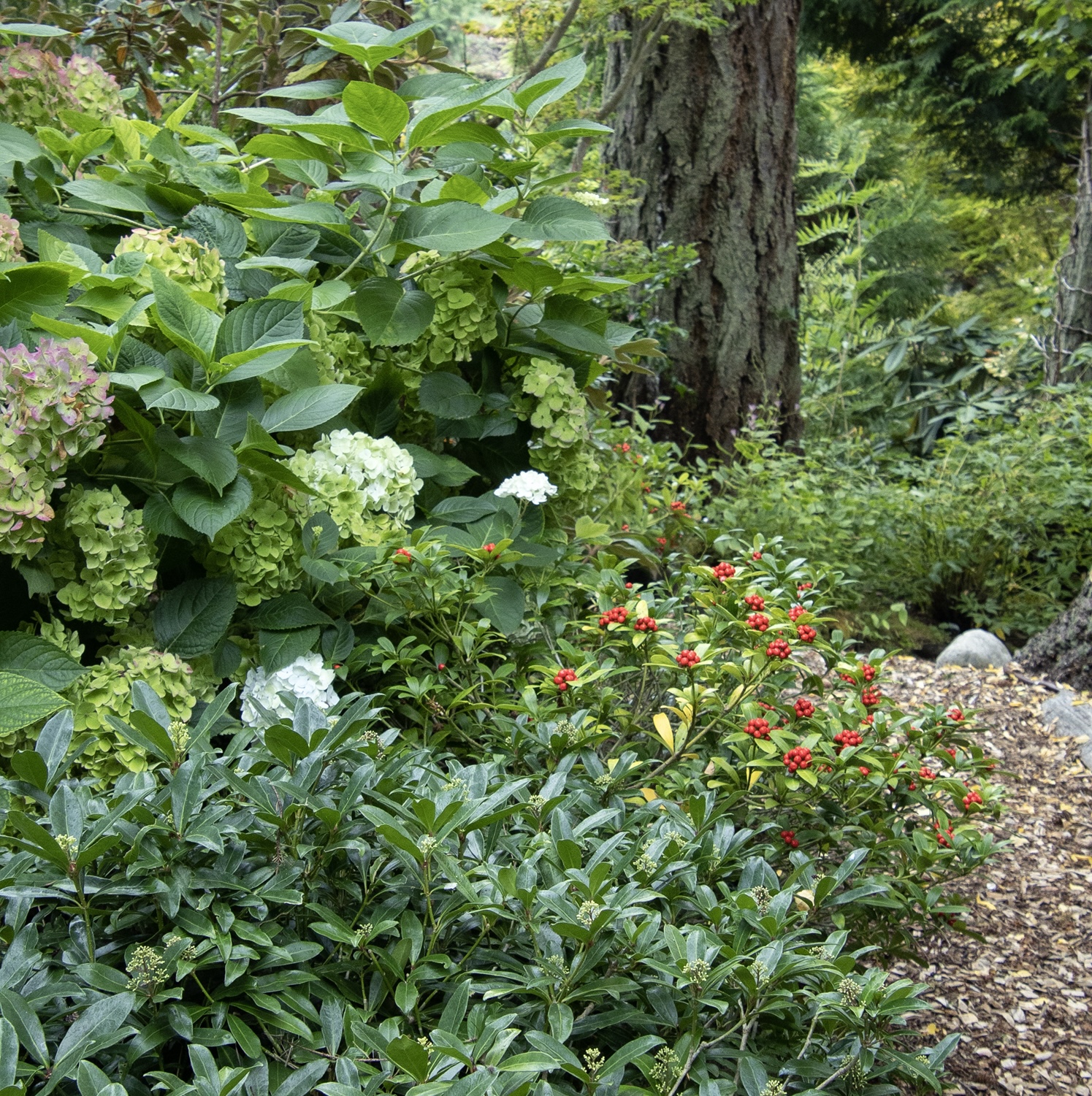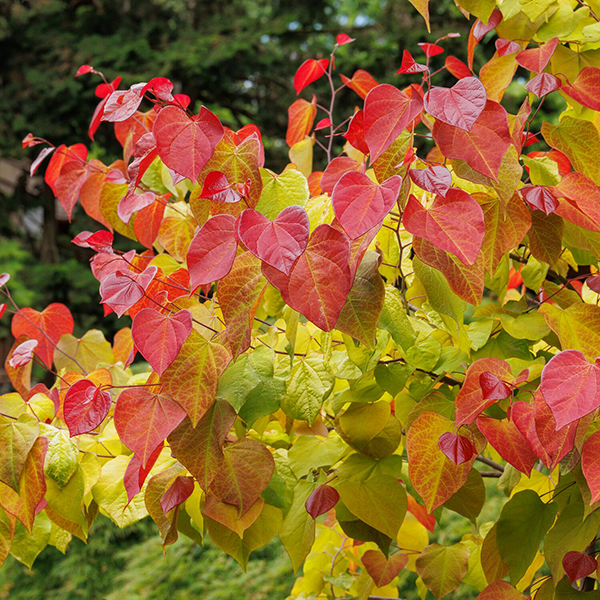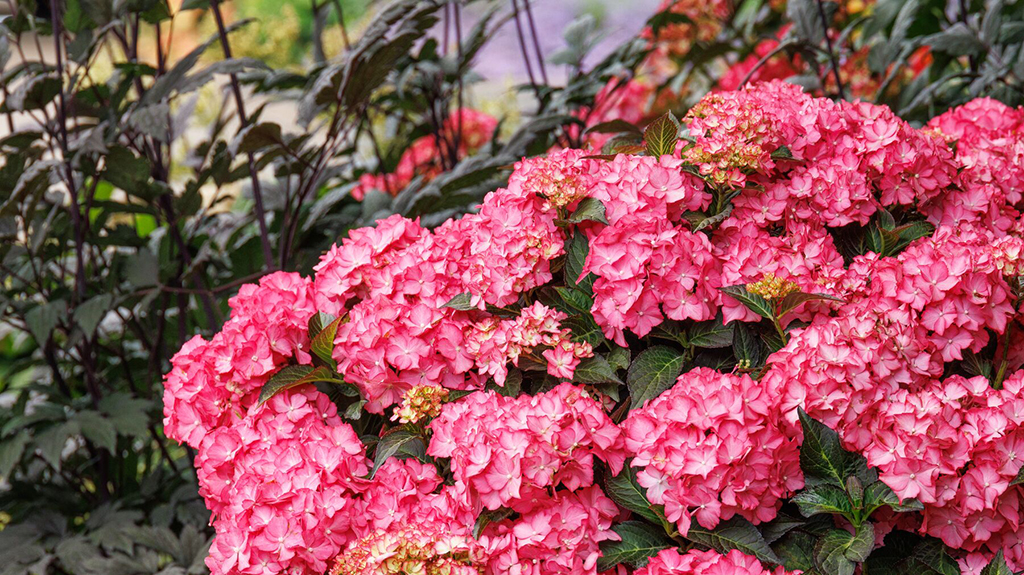Looking for guidance on selecting a color scheme for your outdoor space? We can help! Gardens provide a unique canvas for self-expression, allowing us to showcase our personal style through vibrant hues and captivating combinations. To support and inspire you as you get creative in your garden, we offer complimentary "Shades of Beautiful" color palette guides every year with fresh plant combinations that illustrate different ways that color can be used to make an impact in the garden. You can access all of our latest Shades of Beautiful color palette guides on this page.
If you're ready to explore more, we invite you to subscribe to the Monrovia Grow Beautifully newsletter. As a subscriber, you'll receive exclusive, brand-new digital guides delivered directly to your inbox so you never miss out on our latest tips and inspiration.
Shades of Beautiful Guides
Mastering Color in Your Garden
Creating a stunning garden palette begins with understanding color theory. It is your trusted guidebook for using colors in ways that blend in or stand out. To get started, keep these points in mind:
- The Color Wheel is your best friend when planning garden color palettes. It visually represents the relationships between colors and helps you craft a harmonious design.
- Primary Colors (red, yellow, and blue) set a vibrant tone and are perfect for focal points. Secondary colors, made by mixing two primaries, offer a soothing middle ground.
- Tertiary Colors, created by combining a primary with a secondary, introduce complexity and depth.
- Color Combinations can make or break your garden's appeal. Complementary colors, sitting opposite on the color wheel, create a vibrant look, while analogous colors, next to each other, offer harmony.
Experiment with visually stunning combinations, such as pairing blue flowers with orange marigolds for a complementary scheme or using shades of green for a calming look.
If you're looking for more ideas on designing a colorful garden, don't forget to explore these related resources:
Exploring Different Garden Color Schemes
Knowing how to mix and match colors is important, as is understanding the different garden color schemes available. Let's dive into garden color schemes and discover how they can transform your outdoor space.
Monochromatic Garden Schemes
- Focus on a single color, varying in shades, tints, and tones.
- Creates a visually cohesive and harmonious space.
- Particularly effective in small gardens, helping create a sense of expansiveness and unity.
- Example: A garden filled with different shades of purple, such as lavender and plum, offers a tranquil and sophisticated look.
Complementary Color Schemes
- Utilize colors opposite each other on the color wheel.
- Vibrant and high-contrast, ideal for creating lively, dynamic spaces.
- Requires careful balance to avoid overwhelming the space.
- Example: Bright yellow sunflowers against a backdrop of rich violet flowers create an energetic garden.
Step 1: Selecting Plants for Your Color Scheme
- Choose plants with complementary bloom times to maintain your garden's color theme throughout the season.
- Consider the colors of flowers, foliage, and fruit when selecting plants.
- For a complementary color scheme, try pairing the vibrant red of an Enduring™ Summer Red Crape Myrtle with the deep blue of a Blue Bouquetta Meadow Sage.
- Pay attention to plant height and texture to add depth to your garden color palette.
Step 2: Making Use of Hardscape Elements
- Incorporate elements like walls, pathways, and ornaments to reinforce your garden's color scheme.
- A pathway lined with Black Scallop Ajuga adds a dramatic touch to a garden built around dark hues.
- Use hardscape features to add structure to your garden design.
- Select materials and colors that complement your plant palette, such as white pebbles for a cool-toned landscape.
Step 3: Maintaining Color Throughout the Seasons
- Select plants with varying bloom times to ensure year-round color.
- Incorporate perennials like the Ember Glow Montbretia or the Poco™ Red Hot Poker for summer and fall color.
- Consider the colors of foliage and stems for lasting appeal.
- Use annuals that can be replaced seasonally to fill gaps or introduce new colors.
For helpful tips on maintaining vibrant color in your garden throughout the seasons, be sure to explore these related resources for additional guidance:
Ready to Transform Your Outdoor Space?
If you're longing for a colorful garden but don't know where to begin, we're here to guide you. Our care guides and garden design stories will spark your creativity and show you the limitless potential of your outdoor space. Explore our free digital planning guides for landscape plans, plant lists, and garden ideas today, and start growing beautifully.










